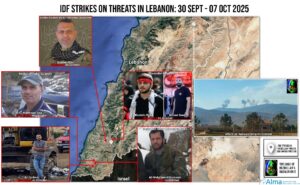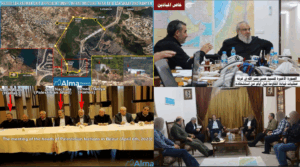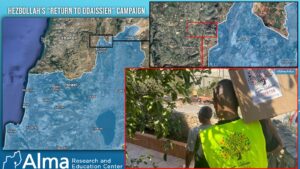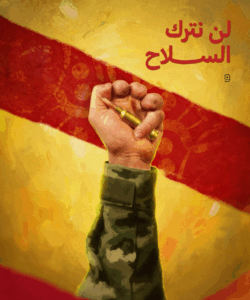The Iranians and Hezbollah can maintain their grip near the Israeli border, among other means, through local residents who had been active in dozens of covert terror cells, recruited by them starting in the mid-2010s. In addition, this control can be preserved through local infrastructures (e.g., militias) that performed various tasks for the Shiite axis during the Assad regime.
The cells and infrastructures in southern Syria were established by Hezbollah’s Golan File Unit, IRGC Intelligence Organization’s Special Operations Division (Division 4000), and Unit 840, the special operations unit of the Quds Force.
To our understanding, these units sometimes cooperated with one another and may have jointly operated certain cells or infrastructures. In some cases, it is possible that a cell and/or infrastructure were run by two units simultaneously, without either unit being aware of the other’s involvement. We termed these situations “double parking,” and in our estimation, the phenomenon of “double parking” was not uncommon.
On July 2, 2025, the IDF arrested several local residents from the villages of Umm al-Luqas and Ayn al-Basali, who were active in a terror cell directed by the Quds Force. On July 7, another arrest was carried out in which several individuals were detained who were active in another terror cell in the Tel Qudna area, also under Quds Force direction. Unlike in the past, where Iranians or Hezbollah operatives could also physically meet in Syria with the local Syrian residents who worked for them, it can be assumed that today, the guidance and operation is done from Iran and/or Lebanon.
At this stage, it is unclear whether these are newly recruited and activated cells following the fall of the Assad regime or former cells that were operating in the area prior to Assad’s fall. We can cautiously assess that it is more likely they are former cells, but this is not certain.
In a special report we published back in October 2020, we identified and mapped 30 areas near the Israeli border in which at least one terror cell from Hezbollah’s Golan File Unit was operating. In two of the areas we mapped—south of the town of Rafid (Where the villages Umm al-Luqas and Ayn al-Basali are located) and north of Rafid (The location of Tel Qudna)—the two aforementioned cells, directed by the Quds Force, were recently apprehended.
The Shiite axis can also leverage its ties with many locals who had been active in 36 local militias in the Suwayda, Deraa, and Quneitra districts (including Sunnis and Druze), which operated on behalf of the Shiite axis in southern Syria and effectively served as proxies for various objectives. We detailed these militias in a special report published in January 2021.
The Shiite axis, led by Iran, has not left Syria following the fall of the Assad regime. Its potential for maintaining control is significant—both through the reactivation of infrastructure established before the regime’s collapse, and through new infrastructures that are willing to do anything for money. Retaining control in Syria, particularly in southern Syria near the Israeli border, is a strategic objective for the Iranians and Hezbollah.
The Iranians and Hezbollah are eagerly awaiting a potential U.S. decision to withdraw from the Al-Tanf area in southeastern Syria. Such a U.S. withdrawal would “open the road” to a significant increase in Iranian foothold and control in southern Syria.







2 Responses
I have said itsince the funural show of Nasrallah.
Israel wasted a great opportunity to wipe out Hezbollah bombing the stadium during the funural show. Instead the IAF flew over as a sort of salut.
The world would have condemned Israel, which they do anyway!
Instead of leaving the area for sharaa to clean it up from Hezbollah, Israel decided to remind us how ugly it is and butt in. Would it kill Israel for once not to look evil?